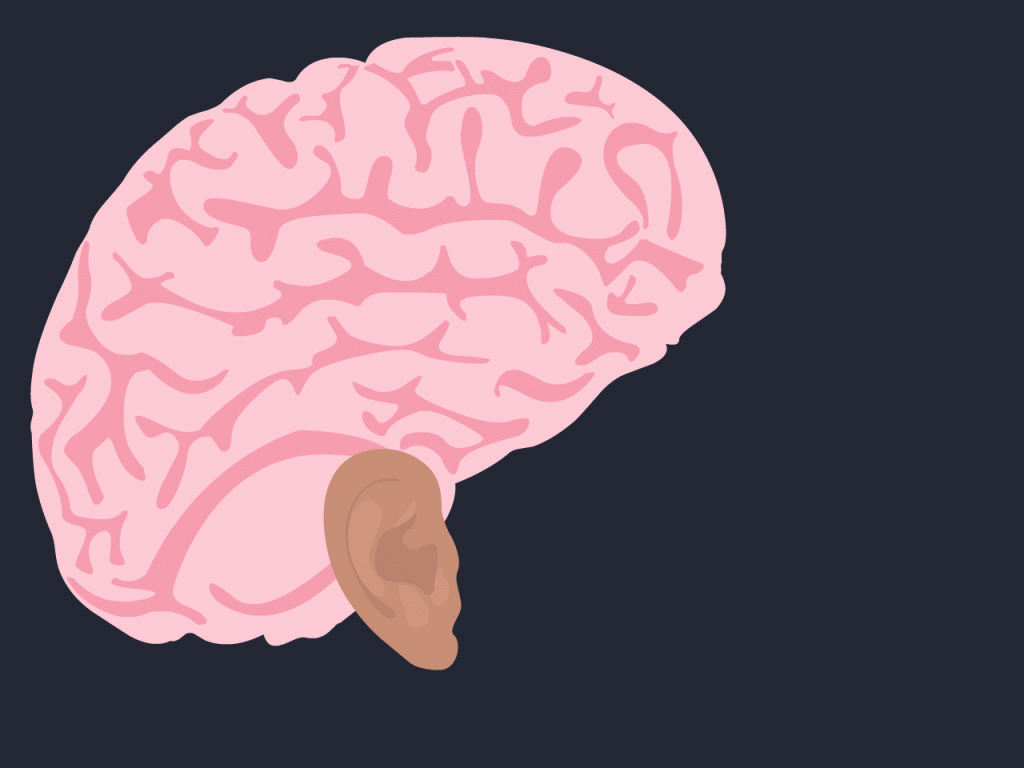Every word you say builds your child’s brain.
Within the first three years of life, 85% of our physical brain is developed. Inside that lovable baby’s head is a veritable hub of activity where 700 to 1000 neural connection are being made each second. At no other time in life is brain growth so rapid. And one of the most important things making these connections is words.

While genetics supplies the blueprints, achievement of innate potentials is largely determined by a child’s earliest language environment: parent talk and interaction.
So how do you create the rich early language environment that is critical for your child’s optimal brain development? Use the Three Ts: Tune In, Talk More, and Take Turns.
Tune In
Tuning In means responding to what you think your baby is communicating. Even if he or she is too young to understand the words being spoken, even if the focus is constantly changing, you should follow and respond to your child’s lead. Here’s how you can do that:
- Get on their level: Whether your child is on the floor playing, in a highchair during mealtime, on your lap reading, or in your arms seeing what you see, Tuning In is enhanced when you and your child are on the same physical level.
- Put away your phone: You can’t Tune In to your child if you’re already Tuned In to computers, tablets, and smart phones. Only when your child is your primary focus will the necessary attention for optimum brain building happen.
- Use baby talk: Parents who speak to their infants only in the way they’d speak to an adult are missing a great opportunity. The high-pitched, sing-song tone of baby talk is actually good for young children. It makes a voice more interesting to listen to, and by appealing to a child’s ears, encourages your child to pay attention to what is being said,
Talk More
Imagine your child’s brain as a piggy bank. Every word you say is another penny in his or her bank. The more you talk, the richer his or her brain grows. The more you put in now, the richer your child will be later. It’s also important to consider the kinds of words you use and how those words are said. A few tips to Talk More:
- Narrate: Narrating what you are doing to your child while you are doing it can sound pretty crazy to someone listening to you. But in addition to increasing vocabulary, narration shows the relationship between a sound (a word), and the act or thing it pertains to.
- Take “it” out: To adults, pronouns are like air: essential, yet you can’t see them except in your mind, and then only if you know what they refer to. He … she … it? Your child will have no idea what you’re talking about. Uncle Mark, Grandma, the sink? Using specific labels, like “house,” “car,” “road,” “pizza,” are very important for both vocabulary-building and understanding for your young child.
- Pick up a book: Story time is full of opportunities to Talk More with your child. Tune In to what in the book is holding the child’s attention and have a conversation. Books are also a great way to build vocabulary. They introduce your child to words not typically said in everyday exchanges and take your child to places he or she has never been.
Take Turns
Take Turns, the most valuable of the three T’s, entails engaging your child in conversation. You’ve Tuned In to what your child is focused on and Talked More about it. The key now is for you to wait for your child to respond. Here are three tips to Take Turns:
- Start from Day 1: It’s never too early to have a conversation with your child. A baby’s turns include coos, gurgles, cries, facial expression, and eye contact. A toddler uses made-up and partial words. A slightly older child Takes Turns with words and short sentences. The most important thing to remember is to Tune In and respond, modeling appropriate language.
- Be patient: Emergent talkers often have to search for words. It may take so long that your instinct may be to respond for your child. This may expose your child to more language, but it may also end the conversation. Allowing your child a little extra time to retrieve words can be the difference between continuing Taking Turns and ending it.
- Go Wide: Open-ended questions are are great conversation-starters and conversation-continuers. Questions like “How did the chair break?” or “Why was the baby crying?” allow your child to respond with a wide range of words, thoughts, and ideas. There is no way to answer a why question with a nodded head or a pointed finger. “How” and “Why” questions start a thinking process that can lead, eventually, to the skill of problem-solving.
It’s important to remember that creating a rich early language environment does not mean carving out dedicated blocks of time in an already busy life. The Three T’s are designed to become a natural part of everyday activities. By adding words, a parent or caregiver transforms making the bed or peeling an apple or sweeping the floor into a brain-building experience. Ultimately, these words will be an important part of enhancing the parent-child relationship as well as a child’s brain.
